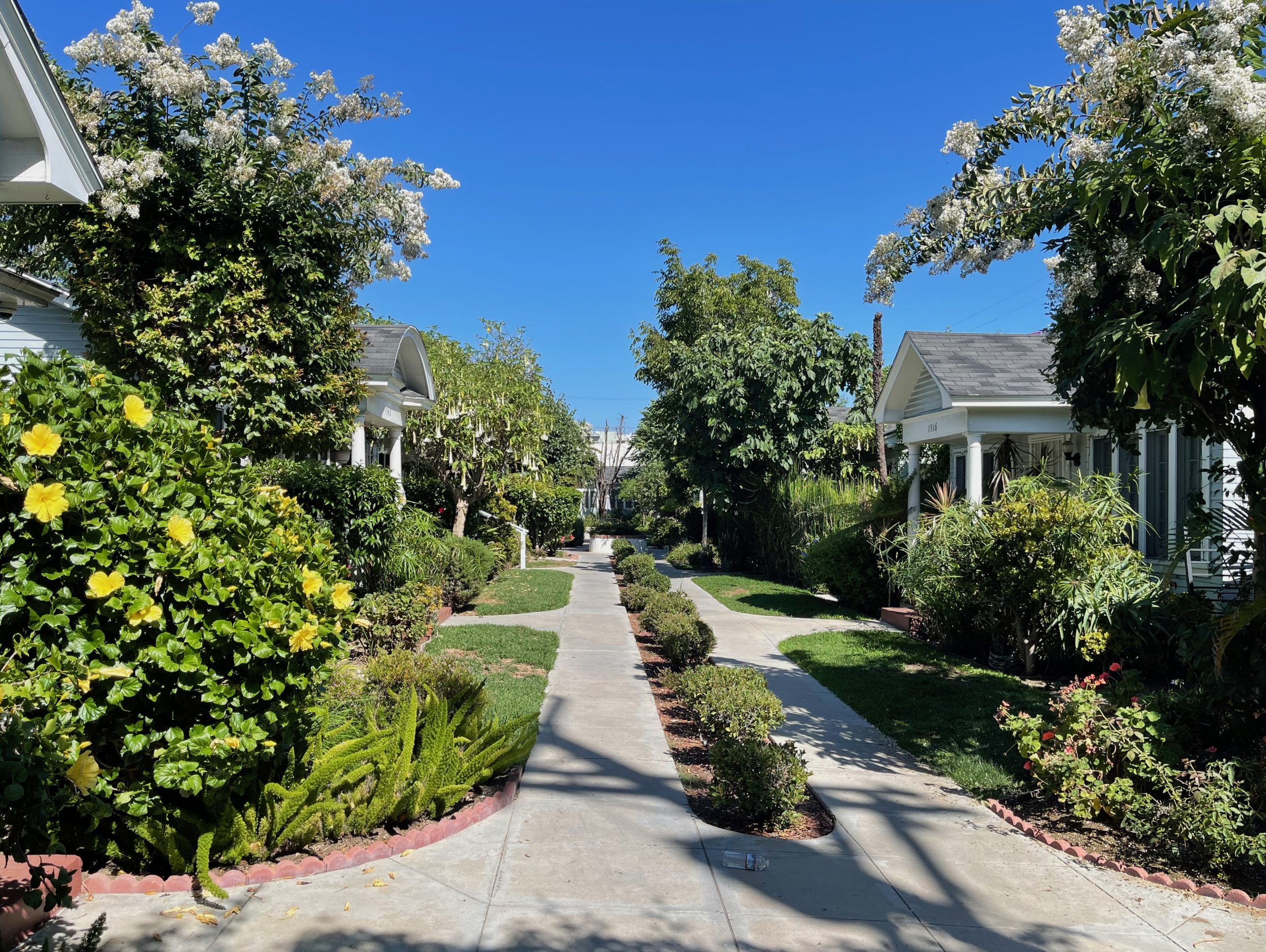
Awesome Building of the Month:
April 2024
St. Andrews Court
Little Charmer!
By Frances Anderton and David Kersh for FORT:LA
Address: 1514-44 N. St. Andrews Place, Los Angeles, CA 90028
Developer: Hollywood Community Housing Corporation
Architect of Remodel: Richard Barron Architects
Contractor: Edwin G. Bowen Company
Date, from start to finish: Property purchased in 1992 and renovations in 1995-96
Type of housing: 100% Affordable
Dwelling mix: 14 One-bed units @ 50% AMI; two two-bed units @ 60% AMI
Cost of construction: $2.9 million
Rent: Residents pay 30% of their income towards rent and the City’s Continuum of Care program pays the balance
Listing: LA Housing Department, Affordable and Accessible Housing Registry
Why St. Andrews Court?
St. Andrews Court is the 1996 renovation of an historic Hollywood bungalow court that was slated for demolition, and now provides 16 affordable homes for formerly homeless people and those living with HIV/AIDS. It paved the way for the acquisition and preservation of bungalow courts by affordable housing nonprofits, providing low-income housing in these delightful, historic places, using strategies such as public subsidies and tax credits as well as innovative density bonus arrangements.
Complexes at this scale are subject to intense pressure to be replaced by higher density housing. According to the LA Conservancy, SurveyLA has identified 410 bungalow courts, representing more than 1,500 units of relatively affordable housing, that are not protected from Ellis Act removals nor by inclusion in a Historic Preservation Overlay Zone (HPOZ) or other historic designation. Since the housing that replaces them is sometimes denser and also affordable, or provides “missing middle” rental or condo options, housing experts are divided on the benefits of holding onto the older courts. But they are a treasured building block of LA’s urban fabric, and for the lucky longtime residents of such complexes, life in a bungalow court is hard to beat.
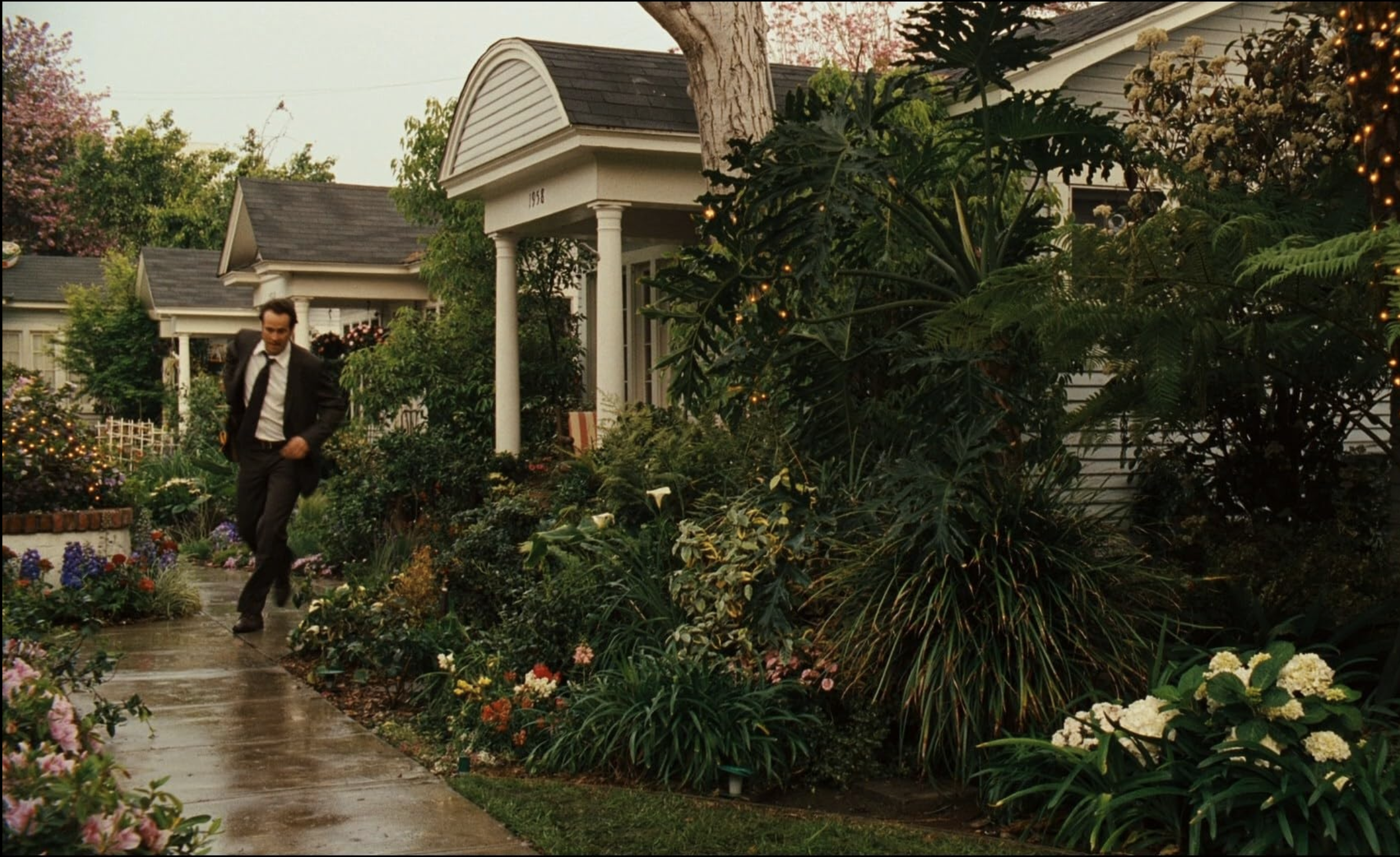
The Good Life, in Miniature
A bungalow court is a compound of small cottages on single, sometimes double, lots arranged in rows opposite a shared pathway or in U–shapes around an open court. They flourished in the first three decades of the last century, and were a boon for builder-owners who could maximize square footage in an investment property while still offering residents a taste of the California dream in homey dwellings with a shared garden and kissed with sunlight on two to four sides, unlike dark, stuffy tenement apartments. They were sometimes lavish and architect-designed but many mom-and-pop owners simply followed plans in plan books. They used basic wood frame construction and added some stylistic features for a bit of extra curb appeal. Many represented a low–rent option for newcomers to the region, and for seniors and working singles, who got the added value of a built-in community in a shared, often professionally landscaped, garden.
When parking minimums were introduced in the 1930s, bungalow courts ceased to be viable, and were superseded by more contemporary rental offerings. Over time they were either demolished or fell into dilapidation, becoming what would now be called “naturally occurring affordable housing” (NOAH), as opposed to deed-restricted housing built using tax credits or public housing. However, most NOAH relies on government intervention of another sort: rent control or stabilization. Stabilizing rents maintains low-income housing but can be countered with disinvestment by the property owners in the buildings, harassment of tenants and Ellis Act removals.

Saving St. Andrews
In the last three decades, we’ve seen the preservation of some bungalow courts through acquisition by affordable housing nonprofits. The pioneering example was St Andrews Court in Hollywood. This adorable complex – so adorable it served as the home for Dave Seville (Jason Lee; see still above), the adoptive father and manager of the chirpy singing group Alvin and The Chipmunks – was built around 1919 by a woman named Fay Sudrow. She chose a Colonial revival style for the 14 one story bungalows arranged in two facing rows of seven, and an eight room duplex at the back. She added extra swagger with distinctive porches with gable roofs both curved and pitched, that were supported by Tuscan columns. A hedgerow down the middle, abundant trees and patches of lawn and flower beds around each dwelling complete the picture-perfect effect.
Such elegance was not enough to sustain the place however, and by the late 1980s a combination of vandalism, fire, dereliction and deferred maintenance brought St. Andrews to the brink of demolition. In 1992 the newly formed Hollywood Community Housing Corporation acquired the property and transformed it.
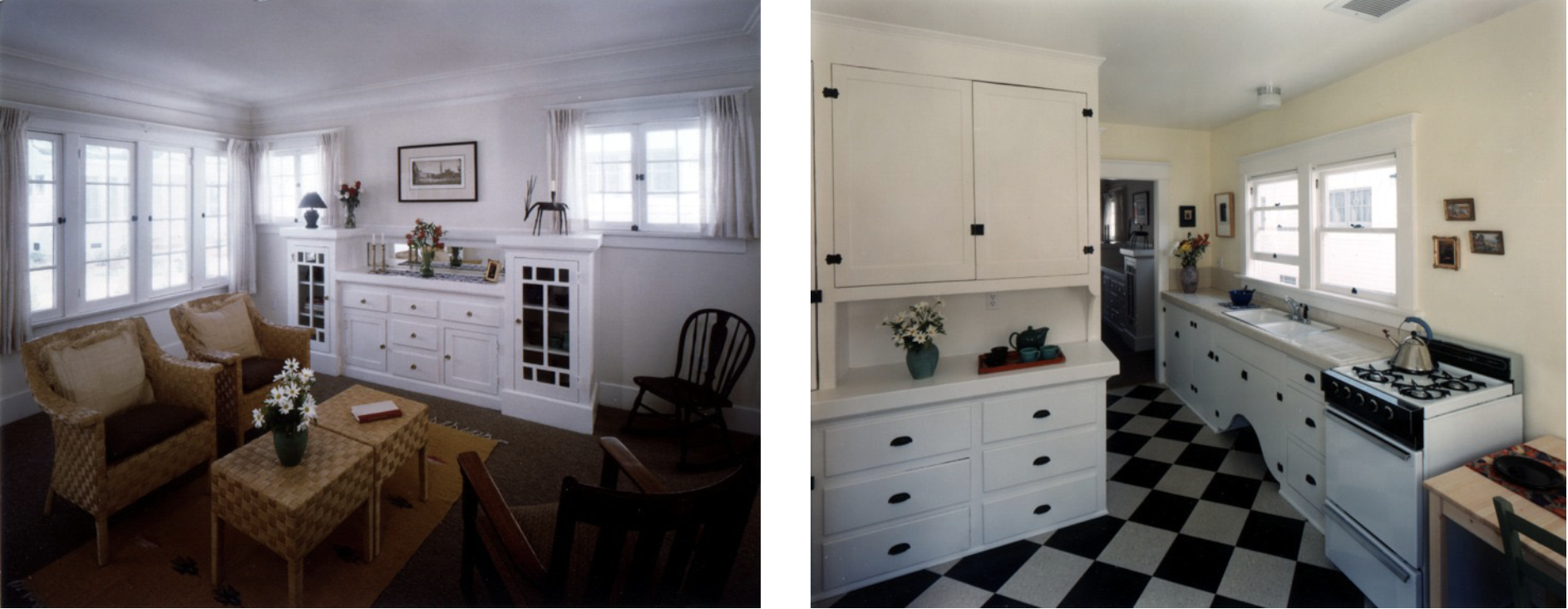
What Makes it Awesome?
Where to start! This court was intrinsically charming, well proportioned, and – in a word – courtly. Preservationists had fought to get it listed on the National Register of Historic Places. So it was incumbent on the new owners to maintain the building to the extent possible.
HCHC undertook an extensive, and complicated restoration involving: replacing foundations and footings; replumbing the entire complex; reinstalling beveled, redwood siding; removing water-soaked plaster surfaces, and replacing them with gypsum board, finished with a plaster skim coat to match the original; stabilizing existing lead-based paint and applying new coats to match the original; replacing missing columns and destroyed gables. They also curbed errant tree roots which were upending porches, re-landscaped the court, and made each unit accessible to people in wheelchairs by adding ramps to the raised porches. The list goes on and on, and the work resulted in a renewed St. Andrews Court with all the charm of the original. St. Andrews is now listed on the National Register of Historic Places.
How did they make the deal?
HCHC financed the $2.9 million project through multiple funding sources: Community Redevelopment of LA (CRA/LA), HUD Innovative Homeless Initiatives Program, LA Housing Department Opportunities for People with AIDS Program, Federal Home Loan’s Affordable Housing Program, Low-Income Housing Tax Credits (LIHTC), Historic Rehabilitation Tax Credits (HRTC), Citibank Federal Savings Bank, First Interstate Bank Construction Financing, and California Equity Fund (CEF).
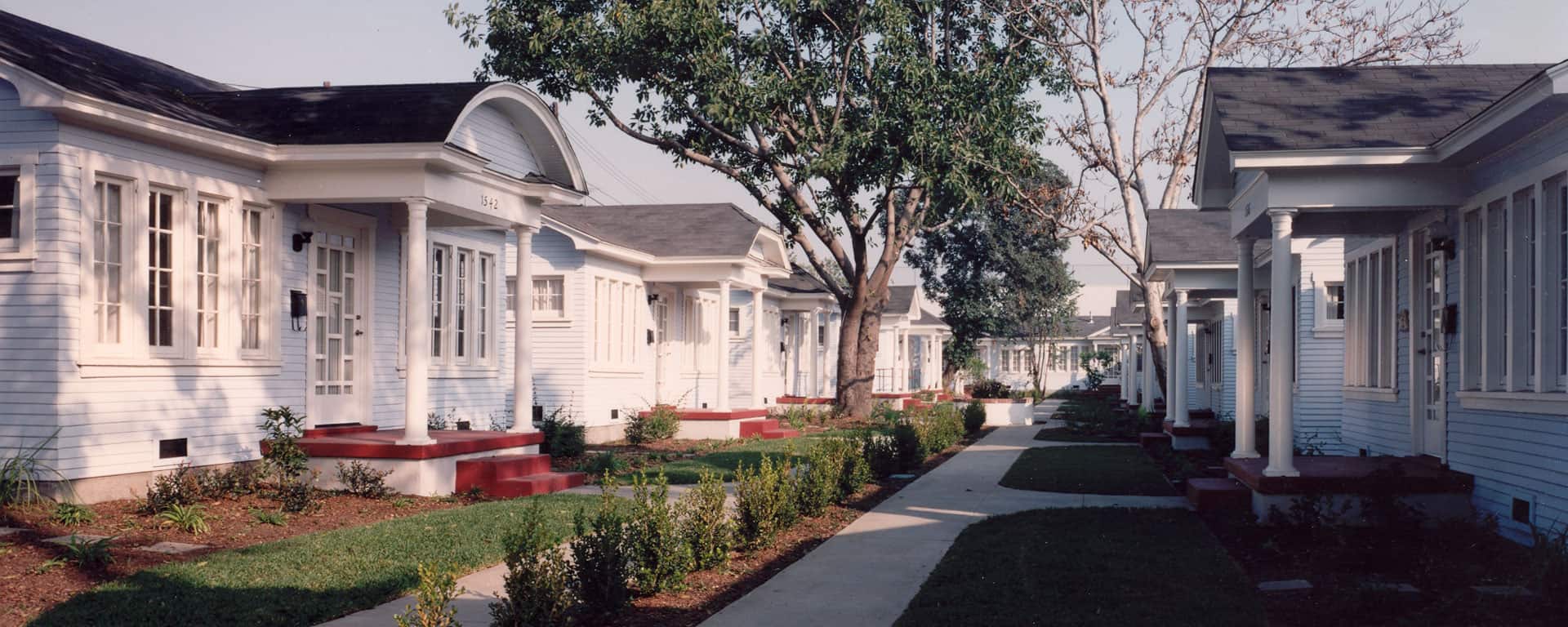
Have Other Bungalow Courts Been Turned into Affordable Housing?
So glad you asked. St. Andrews is not the only bungalow court in Hollywood owned and redeveloped by HCHC. They have four others – three on North Serrano Avenue (1554, 1544 and 1516, below), and one at 1721 N. Kingsley Avenue, completed in 2010. These too had suffered from deferred maintenance and negligence over the years so HCHC rehabilitated the structures to the Secretary of the Interior’s Standards, and now provide homes for 42 low-income individuals and families; 15 of the units are set aside for formerly homeless and special needs households. The Hollywood bungalows were built on land that had been rezoned to a higher density, which was a strong incentive for developers to demolish them to build larger and more profitable development projects. Due to their historic significance, the owners decided to instead rehabilitate the bungalows.
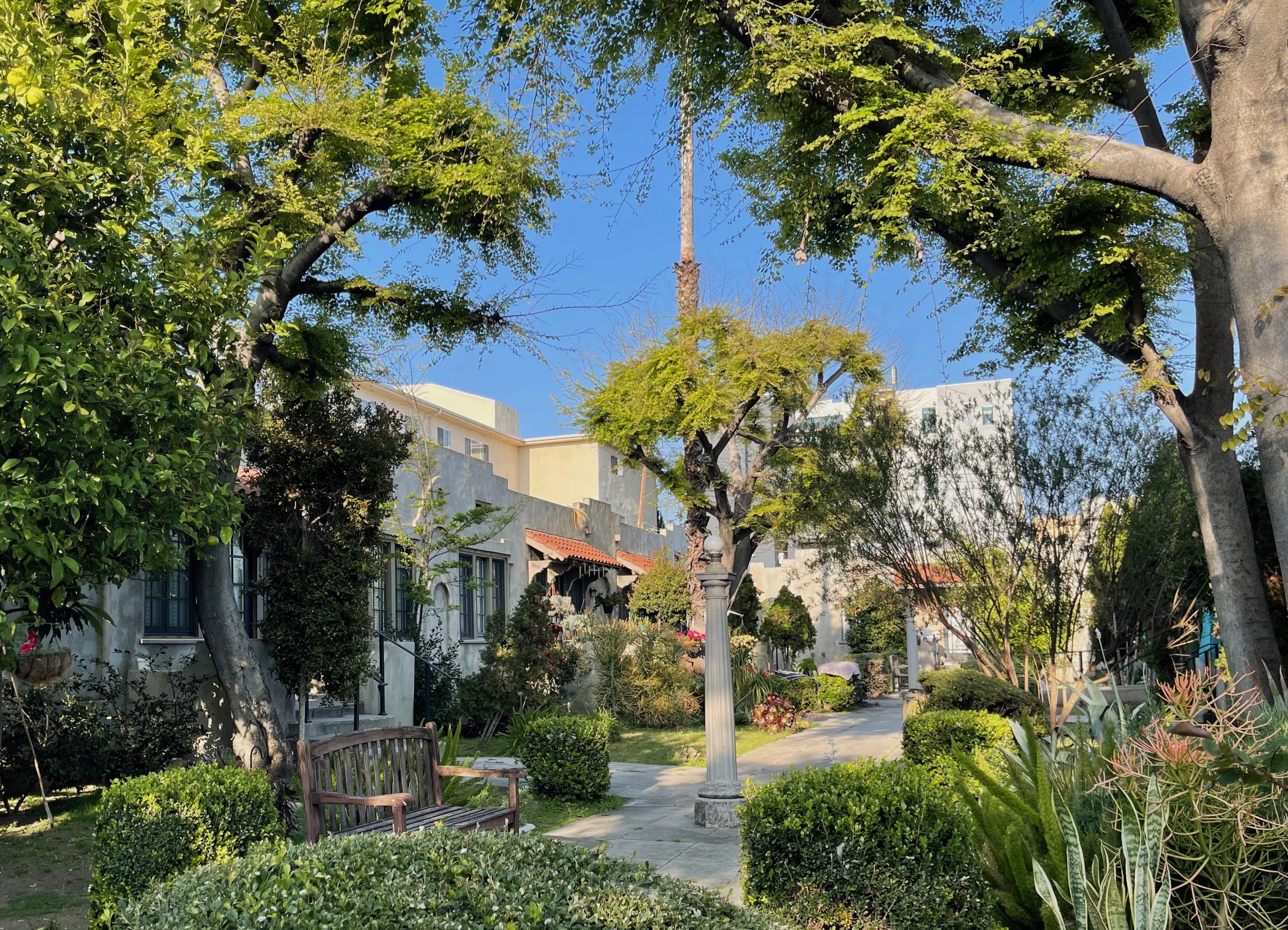
Close by is Hollywood El Centro, owned and redeveloped by Thomas Safran & Associates. Like St. Andrews, this retrofit of 1920s complex of bungalows and apartments with red tiled pitched roofs and decorative pavers went from adorable to miserable and back again.
Different Strategies for Saving Bungalow Courts
CRA/LA
The now defunct CRA/LA (see Playbook) played a critical role in all the bungalow court retrofits mentioned above, simultaneously promoting affordable housing and preserving historic housing. This stemmed from its ability to align its range of public financing tools with a more comprehensive community-based vision. In its later years, CRA/LA approached preservation as part of its legal mandate to redevelop blighted areas. Furthermore, as a governmental agency, with staff, board members, and the involvement of elected officials, it was able to establish trusted relationships with nonprofit and private developers that were close to the ground, to development opportunities and the needs of the local community. For these developers, the CRA served as an established, ongoing source of financial support, and helped make historic preservation and adaptive reuse projects pencil out as affordable housing.
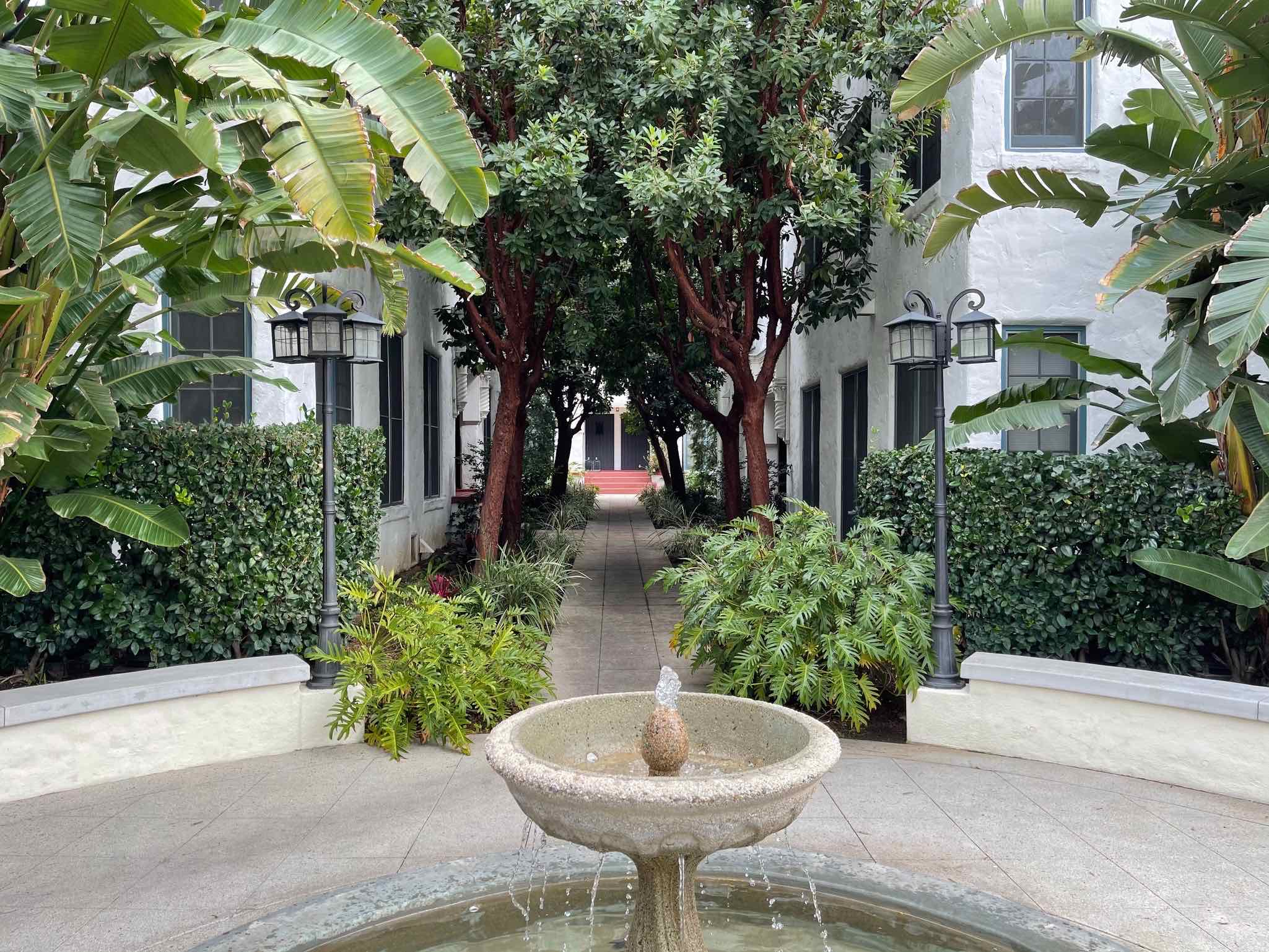
Win-Win with Developer Incentives
A different strategy to save a court complex as affordable housing played out in West Hollywood when new owners purchased the Ramona on N. Harper Avenue (above and below), a 1923 haven of three two-story buildings with a row of trees between the buildings and a fountain out front. Their plan was to knock it down and replace it with market-rate condos. But residents fought back and the city came up with a creative fix: they gave developers permission to build a five-story condominium building around one end of the site. They also offered the condo developers an extra story above the usually permitted height, known as a height bonus, in return for them maintaining the Ramona, almost intact, as low-income dwellings. Ric Abramson, now head of the City of West Hollywood’s Urban Design & Architecture Studio, led the restoration and designed the 2010 condo structure, modeling a win-win way to preserve bungalow courts as low-income housing while meeting today’s market realities.
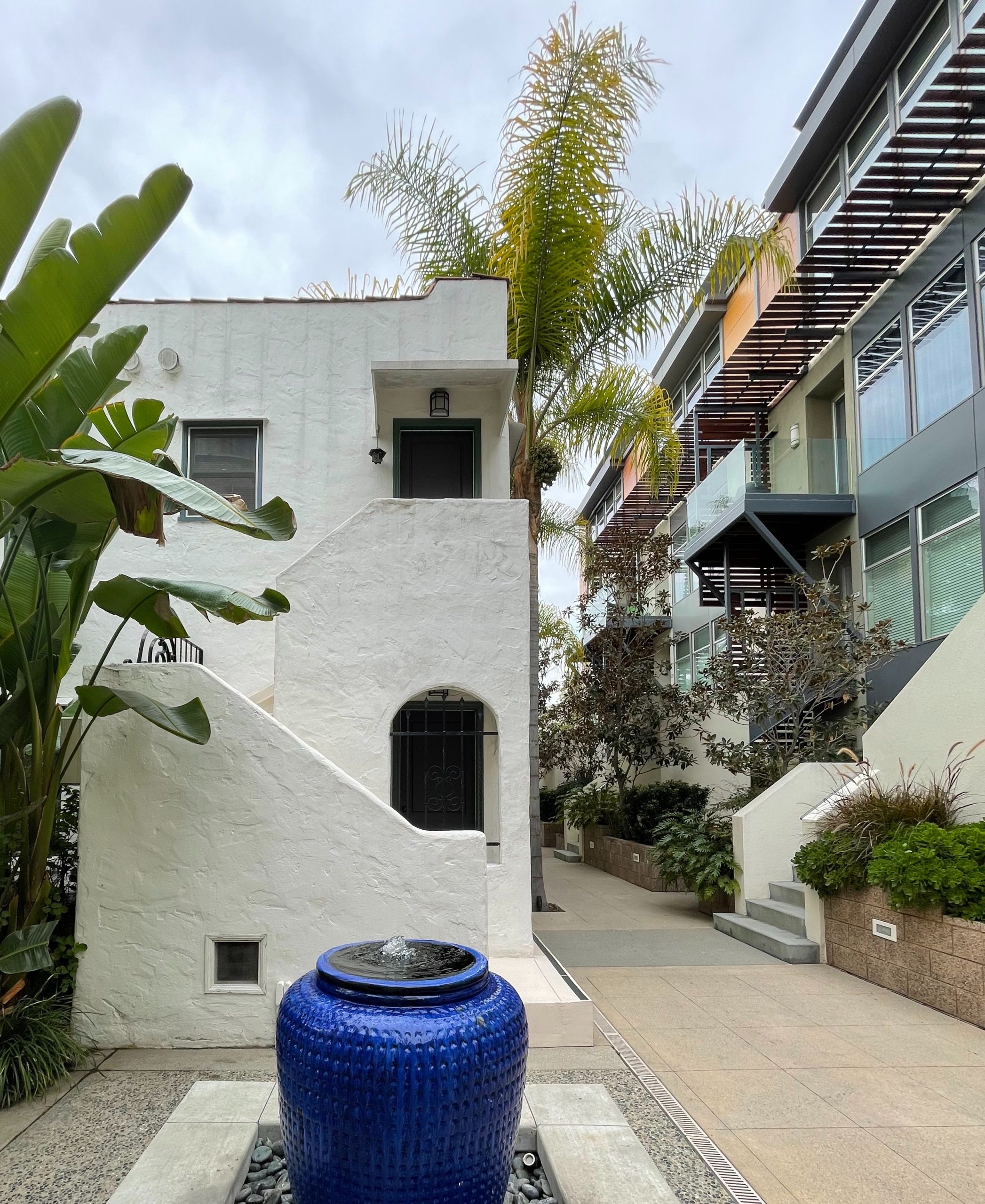
Saving the Bungalow Court, but Not the Low Rent
One of the most recent bungalow court preservation successes was Edinburgh Court in Beverly Grove, below, one of many courts built in the 1920s and 1930s to accommodate people working in the nearby entertainment industry. The eight simple one-story dwellings were enhanced by details like clay tile overhangs above doorways and an arched entryway to the court, typical of the Mission Revival style.
When a new owner purchased the site with plans to demolish the bungalows and build condos around a courtyard, neighbors, some of the tenants and the LA Conservancy teamed up to save Edinburgh Court. Enter a new purchaser who committed to rehabbing it, and did so beautifully, except that the investment made it impossible to maintain the low rents. Upon its reopening in 2023, the rents for new tenants bounced to market rate.
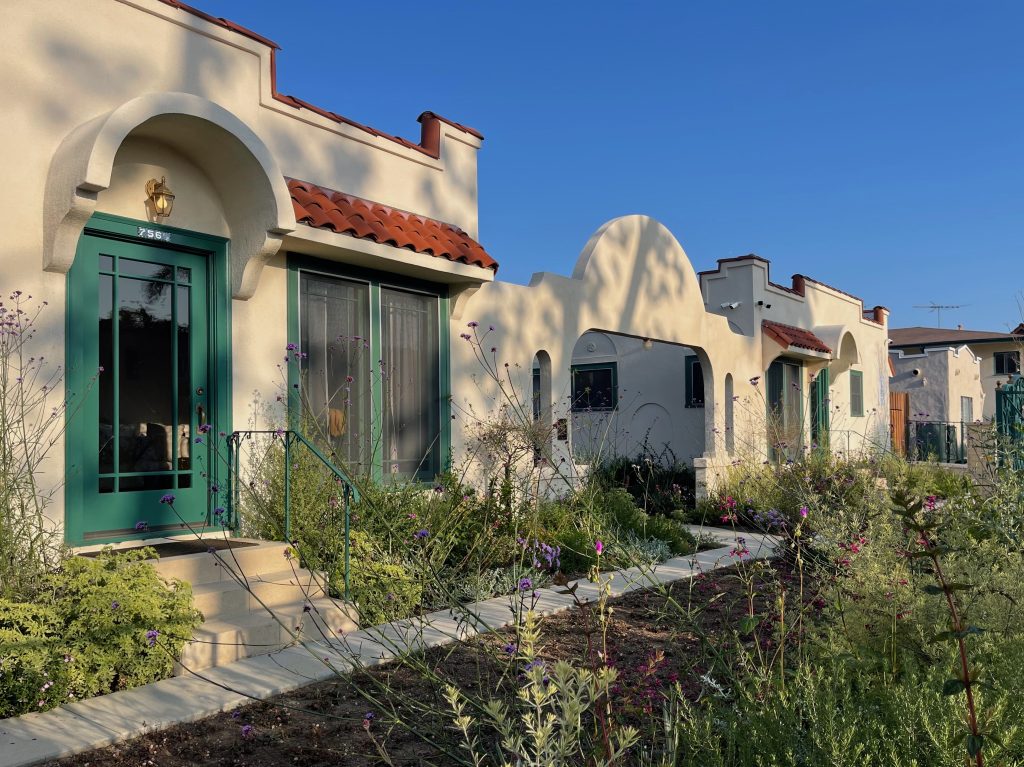
What Does this Mean for Affordability in General?
This raises a question about the trade-offs in saving these beloved but very low density complexes. Sometimes the land is zoned for much higher density and they can be replaced with inclusionary or 100% affordable apartments buildings with more units. Or, they can be replaced by a contemporary low rise rental or condo complex – of the kind that was proposed for the Edinburgh Court site – that may have achieved affordability at a higher income level; namely, missing middle housing for middle income Angelenos, who also lack options right now. It’s complicated.
Call To Action
1) Get active in the city planning process and make your voice heard on the proposed Residents Protection Ordinance to strengthen rent control policies so when courtyard buildings such as Edinburgh, above, are rehabilitated, the prior tenants can be allowed to return, at affordable rental rates.
2) Show your love for great bungalow courts by posting to IG when you see an example you admire, and tag it #AwesomeAndAffordable or #FORTAAA.
Sources: Affordable Housing Through Historic Preservation: Tax Credits and the Secretary of the Interior’s Standards for Historic Rehabilitation, by Susan Escherich, Stephen Farneth, Bruce D. Judd
Image Credits: Photo, top of page, by Frances Anderton; other photos of St. Andrews Bungalow Court courtesy of Hollywood Community Housing Corporation; still from Alvin and the Chipmunks courtesy 20th Century Fox; photos of North Serrano Avenue court, Ramona, and Edinburgh court by Frances Anderton.